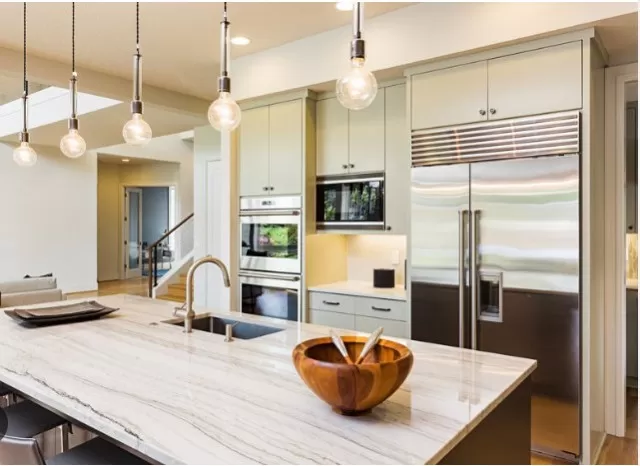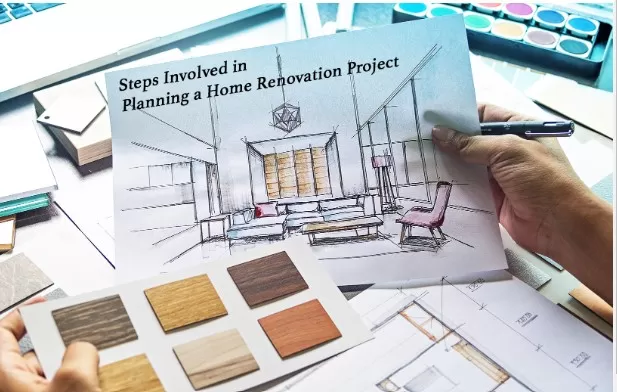Kickstarting Home Renovation Planning: Essential Steps. Embarking on a home renovation, whether it’s a basement, bathroom, or a complete house overhaul, entails a significant journey with its ups and downs.
At the beginning, you’re brimming with excitement and inspiration for the transformation, and once the renovation is complete, the satisfaction of the results is equally exhilarating. Not only can you enjoy your home more, but you also add value to it.
Step 1: Assessing the Value and Purpose of Your Renovation

Before diving into a renovation project, it’s important to take a step back and evaluate its worth in terms of both time and cost.
Begin by clarifying your goals and motivations. Are you aiming for purely aesthetic enhancements, functional improvements, adding value to your property, or a combination of these factors? Amalia Graziani, a developer and interior designer for Noor Property Group, advises, ‘If the renovation is for your personal home, ensure that the changes you’re contemplating are truly valuable to you and worth the associated costs.
If you’re renovating a property for sale, make sure the improvements you’re making will significantly increase its value, surpassing the expenses incurred.
Step 2: Thorough Research and Strategic Planning
Once you’ve committed to the renovation, allocate dedicated time to conduct thorough research on various aspects.
This includes gaining insights into the overall cost, estimated timeline, and potential challenges that may arise. Jon Grauman, a real estate agent and developer, emphasizes the importance of comprehensive planning and seeking advice from multiple experts. He advises, “Thoughtful planning, extensive research, and gathering feedback and information from experts are essential in making informed decisions that align with your goals and set you on the right path. “.
Furthermore, your research can help determine if the timing is optimal for starting the renovation or if it’s better to wait.
It might also reveal the need for additional time to ensure your financial situation is adequately prepared. For instance, you might discover that the estimated cost exceeds your budget or that the proposed timeline conflicts with other commitments, such as a busy sports season or back-to-school period.
“Realistically, a substantial renovation project, with proper planning, can take anywhere from six months to a couple of years,” explains Eddie Prchal, the CEO and co-founder of Gunner Roofing.
“That’s why it’s crucial to have a comprehensive understanding of the entire project. We’ve encountered cases where individuals reached the planning stage, obtained estimates, and then realized that it was more cost-effective to relocate.
“.
Step 3: Establishing a Comprehensive Budget and Accounting for Unforeseen Costs

As you delve into your research, you’ll begin to develop a general idea of the renovation cost.
While online searches can provide a ballpark figure, it’s important to recognize that estimates can vary significantly, and relying solely on Google may not yield reliable results. Eddie Prchal suggests contacting local contractors to request estimates, aiming to gather three to five quotes.
This process will help establish a baseline and give you a clearer understanding of what to anticipate. Prchal emphasizes that reaching out to contractors for bids is also an excellent way to uncover any potential surprises that may arise during the project.
Keep in mind that construction projects often involve unforeseen costs, referred to as “slippage.
” For example, when renovating a kitchen, you might uncover plumbing issues, or replacing windows may require changing the trim as well.
To account for these unexpected expenses, it is advisable to allocate approximately 15 to 30 percent more than the initial quote received.
This buffer will help cover additional costs and should be factored into your budget. By doing so, you will be prepared for any unforeseen circumstances without being caught off guard.
Kris Whitehead, the founder of New England Custom Remodeling, highlights the importance of having this financial cushion, stating, “The worst thing that can happen in the middle of a project is to be forced to cut corners or feel the pressure of making hasty decisions, especially when you’ll be reminded of the work done every time you look at it. “.
Step 4: Choosing the Right Contractor for Your Renovation Project

Finding the right contractor is crucial for a successful and hassle-free renovation.
A reputable contractor will prioritize transparency, respect your time and home, adhere to schedules, and deliver impressive outcomes.
Interior designer Claire Zinnecker, who is currently renovating a 120-year-old Victorian home, offers valuable advice on selecting the best contractor.
She recommends conducting interviews with a minimum of three experts to assess their suitability for your project. Additionally, she suggests reaching out to previous clients to gain insights into their experience working with the contractor.
This firsthand feedback will provide valuable information about the contractor’s workmanship and professionalism.
When evaluating potential contractors, consider the following factors:.
Expertise and Experience: Look for contractors with expertise in the specific type of renovation you require.
Consider their experience, portfolio, and qualifications.
References and Reviews: Request references from previous clients and take the time to speak with them about their experiences.
Additionally, read online reviews and ratings to gather a comprehensive understanding of the contractor’s reputation.
Communication and Professionalism: Assess how well the contractor communicates, responds to inquiries, and explains the renovation process.
A professional contractor will prioritize clear and effective communication throughout the project.
Compatibility and Trust: Ensure that you have a good rapport and feel comfortable working with the contractor.
Trust and open communication are essential for a successful partnership.
Step 5: Signing a Comprehensive Contract
Signing a contract is a crucial step in ensuring a smooth and successful renovation.
A well-drafted contract provides clarity and safeguards your interests in various scenarios. When entering into a contract, it’s important to include essential elements that protect both parties involved.
According to Eddie Prchal, the contract should, at a minimum, include the following key details: your name and address, estimated start dates, warranty information, a comprehensive scope of work, and payment terms.
It’s crucial to be cautious of generic contracts that haven’t been updated to reflect the specific project details. Prchal advises being vigilant and thoroughly reviewing the contract before signing.
If you have any questions or concerns about the inclusion or exclusion of certain elements, don’t hesitate to seek clarification from the contractor. Remember, contracts are designed to protect both the contractor and the homeowner.
Step 6: Ready Yourself for the Commencement of the Project

With a signed contract in place, it’s time to prepare both your home and yourself for the upcoming renovation.
It’s important to recognize that a renovation can be emotionally challenging, as noted by Claire Zinnecker. The process involves making numerous decisions, adapting to changing targets such as budget, scope, and timeline, and navigating through various uncertainties—all while investing a significant amount of money.
To navigate the emotional aspects of a renovation, it’s crucial to be well-prepared and have a thorough understanding of the project’s nuances.
The more informed and aware you are, the better equipped you’ll be to handle the inevitable ups and downs of the renovation journey.
Consider the following steps to prepare yourself effectively:.
Educate Yourself: Familiarize yourself with the details of the renovation, including the planned timeline, potential challenges, and any adjustments that may arise.
This knowledge will help you manage your expectations and stay informed throughout the process.
Establish Open Communication: Maintain clear and open lines of communication with your contractor.
Regular updates and discussions will help you address any concerns, clarify expectations, and ensure that everyone is on the same page.
Prepare Your Space: Clear the renovation area and make necessary arrangements to accommodate the work.
Protect valuable items or furniture that may be affected during the construction process.
Create a Support System: Seek emotional support from family, friends, or professionals who can provide guidance and perspective during challenging moments.
Having a support network can alleviate stress and provide reassurance throughout the renovation.
*The information is for reference only.